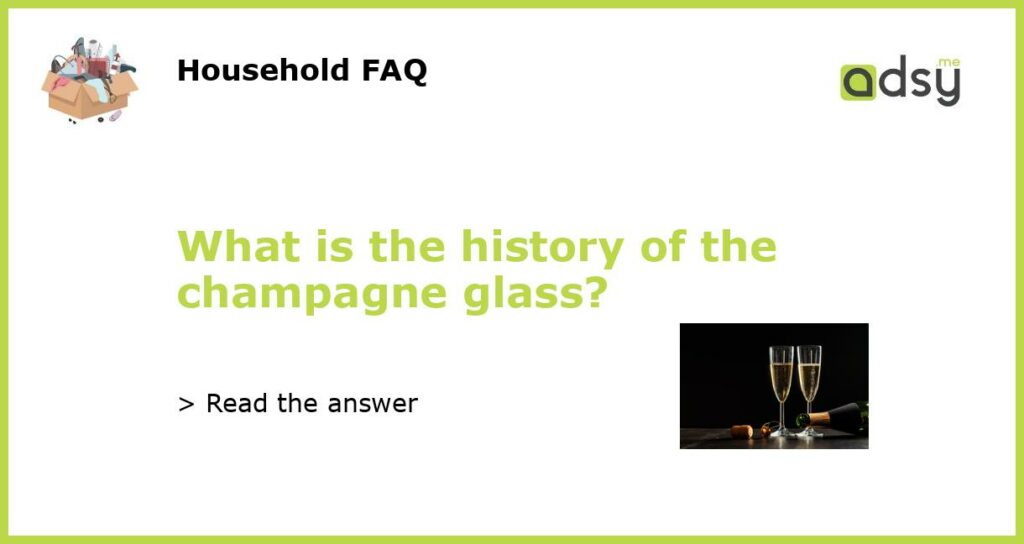The Origins of the Champagne Glass
Believe it or not, the champagne glass as we know it today has not always existed. The history of the champagne glass can actually be traced back to the early 1700s when the sparkling wine we know as champagne was first produced in the Champagne region of France. However, at the time, champagne was still considered a novelty and was primarily consumed by the wealthy elite.
The Birth of the Coupe
During the 1700s, champagne was typically consumed from regular wine glasses as there was no specific glassware made for it. It wasn’t until the mid-18th century that the coupe glass became popular. Legend has it that the shape of the coupe was modeled after the left breast of French queen Marie Antoinette, and the glass soon became a symbol of luxury and elegance.
The Rise of the Flute
Despite its stylish appearance, the coupe glass was not the ideal vessel for drinking champagne. Its open shape caused it to quickly lose its carbonation and aroma. In the early 20th century, champagne producers began to favor the flute glass due to its tall, slender shape that helped to maintain the bubbles and aroma of the wine. The flute quickly became the go-to glass for serving champagne.
A Move Towards Modernity
In the 1980s, the popularity of the coupe glass experienced a brief resurgence among trendy cocktail bars and speakeasies. However, with the rise of modern champagne houses like Moët & Chandon and Veuve Clicquot, the flute glass continued to reign supreme. That is, until the early 2000s when a new, modern champagne glass design began to emerge.
The Future of the Champagne Glass
In recent years, both winemakers and glassware designers have been experimenting with new champagne glass shapes and designs. Some wine experts argue that the traditional flute or coupe glass is not the best way to fully appreciate the flavors and aromas of champagne. As such, new glasses with wider bowls and slightly tapered openings are being introduced. Only time will tell if these new designs will take over as the preferred champagne glass of the future.





